We are now in a state of affairs when an author, particularly a new kid on the block, is expected to build a platform, a fanbase, often before even a single line of their work sees print. Twitter followers and page hits are a vital step in appealing to publishers, important signs for whether an author's work will actually be bought. It's already becoming difficult to conceive of a life with complete and utter privacy, particularly in the case of a writer, so dependent on exposure the process has become. It was not always so.
Even in the days when an author's fans had to wait for an article, an interview, there were those who refused to toss even the slightest crumb of biography the way of the public. Those who eschewed interviews and photographs, whether they believed a writer's work should stand by itself or they plain didn't want to be photographed. They were, or are, mysteries.
Here are five of the most mysterious of all. The fifth is a unique case; his life has been exposed to the public, mostly against his will, but his version of events differs from the disturbing backstory of his debut novel.
Autobiographies will not be available at all good bookstores.
B. Traven
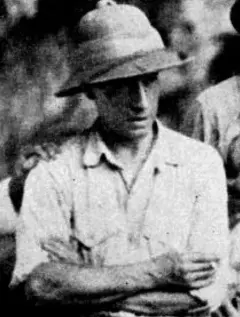 If you want to know all about this highly-regarded writer, most famously the author of The Treasure of the Sierra Madre, then you’re in for a frustrating session at the keyboard. Here are some things you’ll find: frequent question marks in brackets, the word “supposed” appended to more or less every fact, and liberal use of the phrase “subject to dispute”.
If you want to know all about this highly-regarded writer, most famously the author of The Treasure of the Sierra Madre, then you’re in for a frustrating session at the keyboard. Here are some things you’ll find: frequent question marks in brackets, the word “supposed” appended to more or less every fact, and liberal use of the phrase “subject to dispute”.
You see, B. Traven is not his real name. Even his publishers claimed to have never met him, his communications bearing the return address of a Mexican post office box. Traven himself weighed in on the necessity of maintaining this shroud of secrecy, stating that the “creative person should have no other biography than his works.”
But that’s no fun. Theories sprang up trying to deduce just who this Traven guy was. The most commonly accepted hypothesis is that Traven is none other than Ret Marut, a stage actor and anarchist, who moved to Mexico. Other identities have been suggested, all with their own strengths and problems. (Confusingly, Ret Marut’s identity has also been disputed; some think that a Polish man named Otto Feige became Ret Marut before donning the last and most famous of his names.)
Traven maintained his chosen anonymity with relative ease until John Huston’s 1946 adaptation of The Treasure of the Sierra Madre. Huston attempted to meet with the author, but found someone else at their rendezvous: Hal Croves, a translator possessing power of attorney to make decisions on Traven’s behalf. Croves remained on set as a technical advisor, emphatically denying that he was the reclusive author incognito. Some are still unsure, and Warner Bros. fanned the flames after the film became a box-office hit. Nothing opens the public’s purse strings like a good mystery.
Croves promptly vanished. A reporter was dispatched to Mexico in search of Traven or Croves or both. There he followed the trail of information from the Bank of Mexico and found a reclusive inn-keeper, an American, called Traven Torsvan. The reporter claims that he found evidence that this man, Croves, and Traven were all one and the same. A package addressed to “B. Traven”, royalty checks, the works. Mystery solved! Until the article was published. Torsvan rebutted in print, with an emphatic denial. And, of course, promptly vanished.
Other theories for your delectation: Jack London faked his death, moved to Mexico, and became B. Traven; Ambrose Bierce vanished to start a new writing career as B. Traven; B. Traven was the illegitimate son of German Emperor Wilhelm II.
Hal Croves (remember, the apparent translator who worked on the Huston film?) decided to resurface in the fifties, running a literary agency and attending a German film premiere of a Traven adaptation. Again, he denied being the author. On his death, Croves’ widow claimed he really was Traven, that he had moved between Germany and America in his younger years (as a young revolutionary – Ret Marut) before being sentenced to death after editing an anti-war magazine under the Nazis, and escaping to a new life in Mexico. This is thought to be the most likely, and complete, theory of events. Some doubts still linger, foremost of which are simple errors about the chronology of events in Traven’s life as recounted by Croves’ widow.
Traven probably died in the sixties. Someone certainly did. He is survived by a mystery.
J.D. Salinger
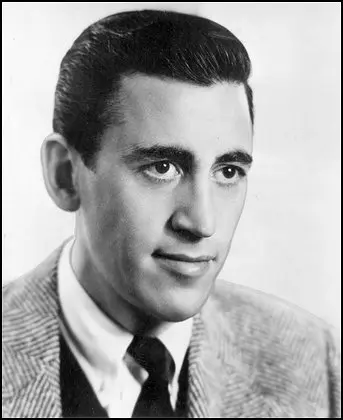 Well, of course. We’ve seen the photo, black and white, handsome, an uneasy smile. It’s one of the few widely circulated. After Salinger published The Catcher in the Rye, he retreated from the ensuing fame gradually, until fewer and fewer could speak of his life with any real authority. He died in 2010, but his last published story was in 1965, his last collection two years previous to that. At first, he kept up communication with the locals of Cornish, New Hampshire, his new home, inviting local high school students to hang out at his house and play records. He even acquiesced to an interview for the school paper, although cut off all communication after it was published. Almost everything about his life afterwards has been by proxy, whether by rumor or the confessions of past friends and lovers (the most famous being Joyce Maynard, who wrote about their relationship) and the disputed and contradictory statements of his children. His daughter wrote about her father’s forays into alternative medicine and Eastern philosophies. Her brother dismissed her “gothic tales of our supposed childhood.”
Well, of course. We’ve seen the photo, black and white, handsome, an uneasy smile. It’s one of the few widely circulated. After Salinger published The Catcher in the Rye, he retreated from the ensuing fame gradually, until fewer and fewer could speak of his life with any real authority. He died in 2010, but his last published story was in 1965, his last collection two years previous to that. At first, he kept up communication with the locals of Cornish, New Hampshire, his new home, inviting local high school students to hang out at his house and play records. He even acquiesced to an interview for the school paper, although cut off all communication after it was published. Almost everything about his life afterwards has been by proxy, whether by rumor or the confessions of past friends and lovers (the most famous being Joyce Maynard, who wrote about their relationship) and the disputed and contradictory statements of his children. His daughter wrote about her father’s forays into alternative medicine and Eastern philosophies. Her brother dismissed her “gothic tales of our supposed childhood.”
Many a curious traveler, writer or not, made the trip into Cornish hoping for a glimpse of the reclusive writer. The locals are fiercely protective, and who could fault them? If Salinger wanted to be left alone, that was his business. He remained there until his death, just over two years ago. Despite his slim output, Salinger is listed among the greats of twentieth century writers.
There’s a great deal of work left unpublished from his decades of isolation.
Thomas Pynchon
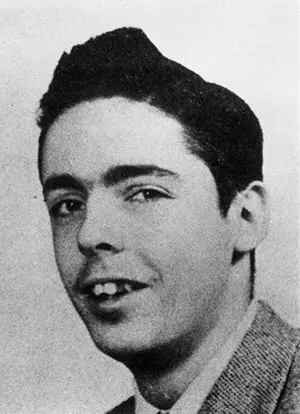 Great and famous avoider of reporters (it’s said that he once jumped out of a window to avoid an encounter with a journalist), Pynchon has never granted an interview. The few images he’s permitted to be released are his young fifties self, monochrome and smiling. In 1997, CNN filmed him walking the streets, though the author phoned them and asked to not be revealed. A compromise was reached; the footage was released, but the author not identified from among the throng of passersby.
Great and famous avoider of reporters (it’s said that he once jumped out of a window to avoid an encounter with a journalist), Pynchon has never granted an interview. The few images he’s permitted to be released are his young fifties self, monochrome and smiling. In 1997, CNN filmed him walking the streets, though the author phoned them and asked to not be revealed. A compromise was reached; the footage was released, but the author not identified from among the throng of passersby.
There are consequences for refusing to play ball with the media. Eventually, people will talk. A theory that Pynchon was the Unabomber represents the bizarre lengths some will go to make a story from a celebrity’s rigid and determined silence. An attributed alias for a long time was Wanda Tinasky, a claimed “bag lady” living under a bridge in California who wrote a series of comic and intelligent letters to two newspapers in the Eighties. Tinasky is now widely believed to be a little known Beat poet named Tom Hawkins. Still, the surreal and farcical stories trailing Pynchon would fit neatly into one of his novels.
Pynchon has occasionally broken his silence. His voice can be heard in the book trailer for his latest novel, Inherent Vice, giving a brief reading before rambling about the price of books nowadays. He’s also made two guest appearances on The Simpsons (depicted as a publicity hungry egomaniac, cultivating an air of mystery by wearing a paper bag on his head emblazoned with a giant question mark).
The followers of Pynchon clamor to know more about him. Anyone who’s read one of his novels can see how vast his knowledge is. Until something slips out, we will have to wait a while longer. We await Pynchon’s silent revelation.
Henry Darger
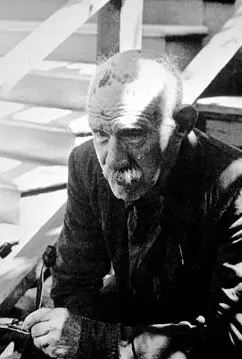 Henry Darger lived in the same Chicago apartment for the last forty-three years of his life. He kept to himself. His one close friend – though they only communicated by letter for the twenty-five years – died over a decade before Darger. Darger attended Mass. He collected trash from the streets. He kept diaries and a daily weather journal. When he died, in 1973, there was nobody in his life.
Henry Darger lived in the same Chicago apartment for the last forty-three years of his life. He kept to himself. His one close friend – though they only communicated by letter for the twenty-five years – died over a decade before Darger. Darger attended Mass. He collected trash from the streets. He kept diaries and a daily weather journal. When he died, in 1973, there was nobody in his life.
Henry Darger was also up to something else. After his death, a 15,145 page manuscript (single-spaced) was found in his apartment, a fantasy epic called The Story of the Vivian Girls, in What is known as the Realms of the Unreal, of the Glandeco-Angelinian War Storm, Caused by the Child Slave Rebellion. The title also serves as a handy synopsis. I’m neglecting to mention the hundreds of watercolors and drawings included with the manuscript. Also the 10,000 page (handwritten) sequel, entitled Crazy House: Further Adventures in Chicago. Oh, and when he felt like slumming it, wrote The History of My Life, a biography that abandons itself (himself) 206 pages in, preferring to spend the remaining 4,672 pages talking about a fictional hurricane called “Sweetie Pie”.
Darger is now a major figure of outsider art. His paintings go for tens of thousands of dollars. The books aren’t published in their complete form, not that anybody could really begrudge a publisher that. A documentary, In the Realms of the Unreal, chronicles the scant details of Darger’s life and features readings from his vast opus. Darger apparently had no interest in his work being recognized, at least during his life. He is the only author in this list whose fame did not come in life. Maybe it would have given him pleasure and comfort, or he would have shied away. Still, it’s hard to read this, his last diary entry, and not wish he could have known how high regard for him would become:
"January 1, 1971. I had a very poor nothing like Christmas. Never had a good Christmas all my life, nor a good new year, and now.... I am very bitter but fortunately not revengeful, though I feel should be how I am...”
Krystian Bala
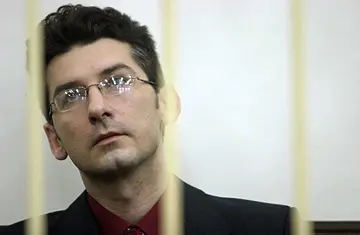 Krystian Bala has only published one novel thus far, Amok, but you can’t buy it in English. He’s still only in his late thirties, and accepts visitors, gives interviews. I would be completely unaware of Bala if it weren’t for an excellent article in David Grann’s intriguing book, The Devil & Sherlock Holmes. You see, Bala is in prison for murder. A murder in 2000, details of which are central to Bala’s novel. Details that only the killer would know. Sales soared as the curious parsed the text for clues to Bala’s crime. He’s currently serving a twenty-five year sentence. He strenuously denies any involvement, claiming that he incorporated details from newspapers and television.
Krystian Bala has only published one novel thus far, Amok, but you can’t buy it in English. He’s still only in his late thirties, and accepts visitors, gives interviews. I would be completely unaware of Bala if it weren’t for an excellent article in David Grann’s intriguing book, The Devil & Sherlock Holmes. You see, Bala is in prison for murder. A murder in 2000, details of which are central to Bala’s novel. Details that only the killer would know. Sales soared as the curious parsed the text for clues to Bala’s crime. He’s currently serving a twenty-five year sentence. He strenuously denies any involvement, claiming that he incorporated details from newspapers and television.
Krystian Bala is mysterious in a different way than anybody else on this list. He’s talkative, maybe even charming, and willing to engage with interviewers. The mystery is in whether he committed the crime, and whether it was for the sake of the novel, or the novel was a way to boast or relive the murder. Bala has appealed the conviction, and lost. It’s unlikely he will ever admit guilt, or explain his reasons. Police claim they’ve found evidence on his computer of plans to kill a second victim for his second novel.
Conclusion
The fascination that arises from the mysterious lives of authors suggests an interesting possibility. Can a degree of notoriety, fervor even, be preplanned and instigated by an author's self-conscious refusal to make their lives public? It may have that effect, but it should be noted that, when the curiosity enflamed during the authors' lifetimes, it was predicated by a widely loved and discussed book. Also, artistic accomplishments aside, would you wish these biographies on yourself? The romanticism would fade; loneliness would creep in. Still, if you're uncomfortable with the level of interaction demanded of you as a writer, take comfort. The introverted have a noble history of success. Just wait until you've made a name before retreating from the spotlight. Also, please don't kill anybody. The backlash will be harsh.

About the author
Jack is a graduate of the University of Warwick. His current project is a surreal biography of the band Paris and the Hiltons. He lives in the UK, where he founded the netlabel Portnoy Records. He can't juggle yet, but really is trying very hard. Often he tells people he's ten feet tall, even when they're standing in front of him, which makes for awkward pauses. He writes incoherent thoughts and opinions at the International Society of Ontolinguists.







